| | | | | | | Presented By DEMETER FRAGRANCE LIBRARY® | | | | Axios Cities | | By Jennifer A. Kingson ·Oct 29, 2020 | | Today I promise you a virus-free newsletter with no presidential politics — just cities stuff (and some candy at the end). And: I just got a very nice note from Kim Hart, who says baby Jenna is home from the hospital and doing well. As always, it's great to hear from her! Today's newsletter is 1,431 words, which will take you 5½ minutes to read. | | | | | | 1 big thing: Americans push their garbage collection underground | 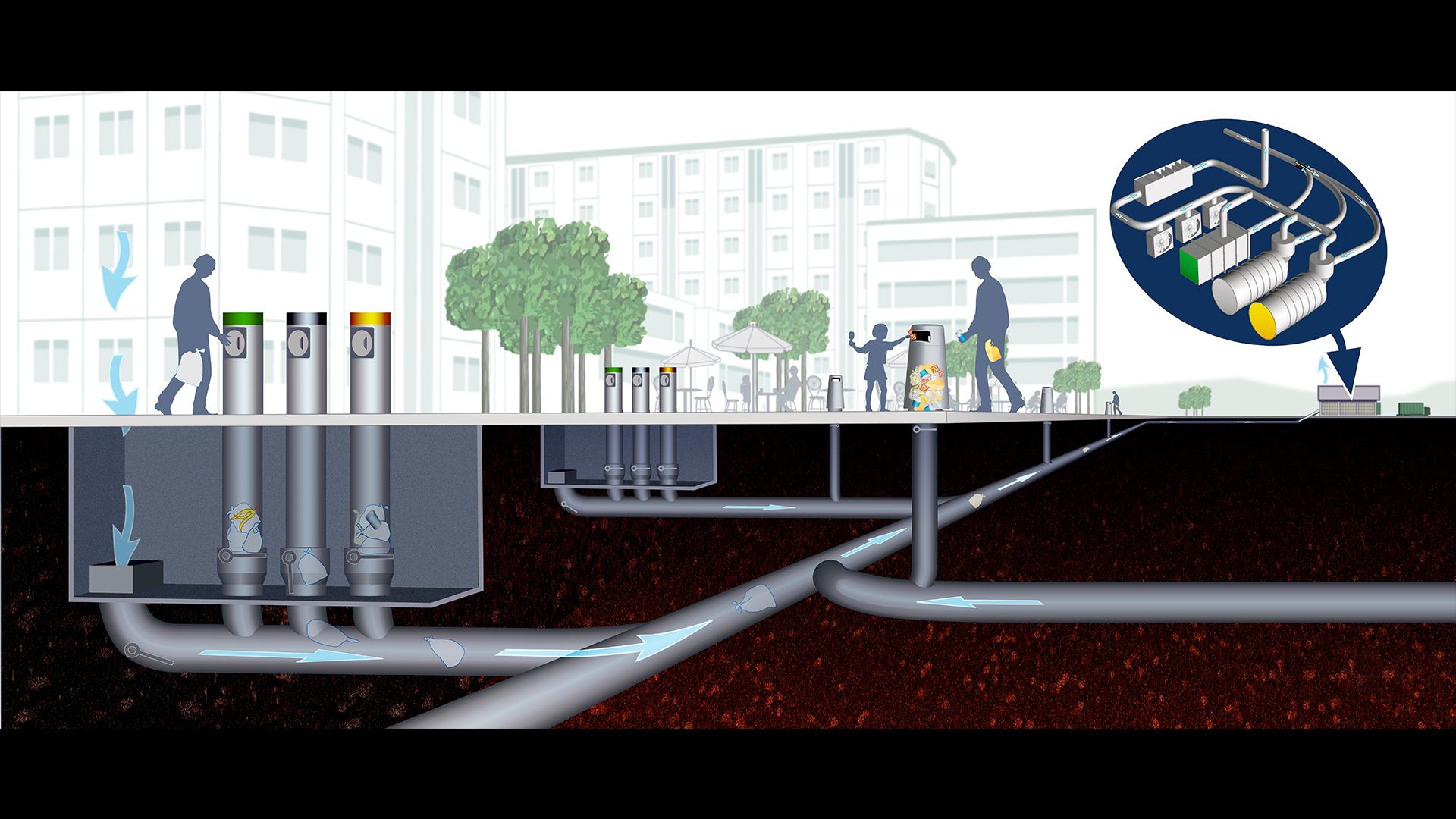 | | | Envac's automated vacuum collection system. Source: Envac | | | | Trash systems that use vacuum suction and pneumatic tubes to whoosh garbage from people's homes and sidewalk bins have been around for decades, but are gaining new traction in the U.S. Why it matters: These systems — which currently serve Disney World and Manhattan's Roosevelt Island — get municipal garbage trucks off the streets and offer cleaner and greener waste removal. Driving the news: The New York City Housing Authority (NYCHA) is soliciting plans to build a vacuum-tube-based underground garbage system for Polo Grounds Towers, a 4,000-resident complex in Harlem. - A contract will be awarded next summer, and the new system would probably be the first in the U.S. to include recycling.
- The project "could have a huge impact on plans for private development," Juliette Spertus, an urban designer with NYCHA, tells Axios.
- The owners of Hudson Yards, a private residential and commercial development on Manhattan's West Side, have signaled interest in building one.
- And a group called ClosedLoops wants to build one under Manhattan's High Line in Chelsea.
How it works: Pedestrians or residents place trash in chutes in their homes or where outdoor garbage baskets would normally be. A stream of air sucks the refuse down to subterranean pipes, where it's forced by vacuum pressure to a central collection station. - From there, the waste is sent to permanent disposal sites like landfills.
- Larger items like sofas, heavy cardboard boxes or computer monitors don't go through pneumatic tubes — they get placed in discrete collection areas.
- No municipal garbage trucks are involved, and overflowing trash bins are a thing of the past, companies like Envac and a newer rival, MariMatic, tell me.
- If someone drops something heavy or otherwise naughty into the system, maintenance workers shut down a pneumatic tube, remove the offending object and restart it.
Other advantages: The places in an apartment complex that would normally be dedicated to trash management can be freed up for other uses — like bike rooms. - "Our vision is that pneumatic systems should become as natural a part of a city's natural infrastructure as water, electricity or sewage," says Joakim Karlsson, CEO of Envac, the Stockholm-based company that invented pneumatic waste collection systems in the 1950s and installed the Disney World and Roosevelt Island systems in the 1970s.
- Most systems are currently outside the U.S. — primarily in Europe, Asia and the Middle East.
The intrigue: MariMatic, which is based in Finland, says its technology is more modern and better suited to recycling. - It uses plastic pipes that are smaller in diameter than Envac's steel pipes.
- This equates to lower energy consumption, Albert Mateu of MariMatic told me.
- These systems are growing "more and more popular around the world," Mateu says, but they're a tougher sell in the United States.
- Benjamin Miller of ClosedLoops, which wants to build a system for the High Line, says that's largely because the capital expenditure of such a system is upfront — and expensive — compared with the cost of replacing garbage trucks.
What they're saying: "If you had to build a new world, would you choose garbage trucks? I don't think so," Karlsson says. Read the full story. |     | | | | | | Bonus: Roosevelt Island |  | | | A view from Manhattan of the southern stretch of Roosevelt Island. Photo: Jennifer A. Kingson/Axios | | | | It's 2 miles long and very narrow. It used to house the New York City Lunatic Asylum and a smallpox hospital. While you may never have heard of it, it's part of Manhattan, presiding with elegance over a patch of the East River, sandwiched between Manhattan and Queens. - Thanks to its underground garbage system, it was a rare place in NYC where waste management wasn't harmed by Hurricane Sandy in 2012, Karlsson of Envac says.
Why it matters: Don't cry for New York's housing market just yet. Roosevelt Island — known when I was very young as "Welfare Island" — has become a hot place to rent or buy. - This small two-bedroom, two-bath rental (with city views) will knock you back $5,095 a month.
- This seemingly similar unit has a list price of $1.35 million.
Proof it's still 🔥: The NYT reported in September that a designer's runway show held on the south side of "a small New York City island" was "one of the most ambitious presentations during New York Fashion Week." |     | | | | | | 2. Double-parking overground | 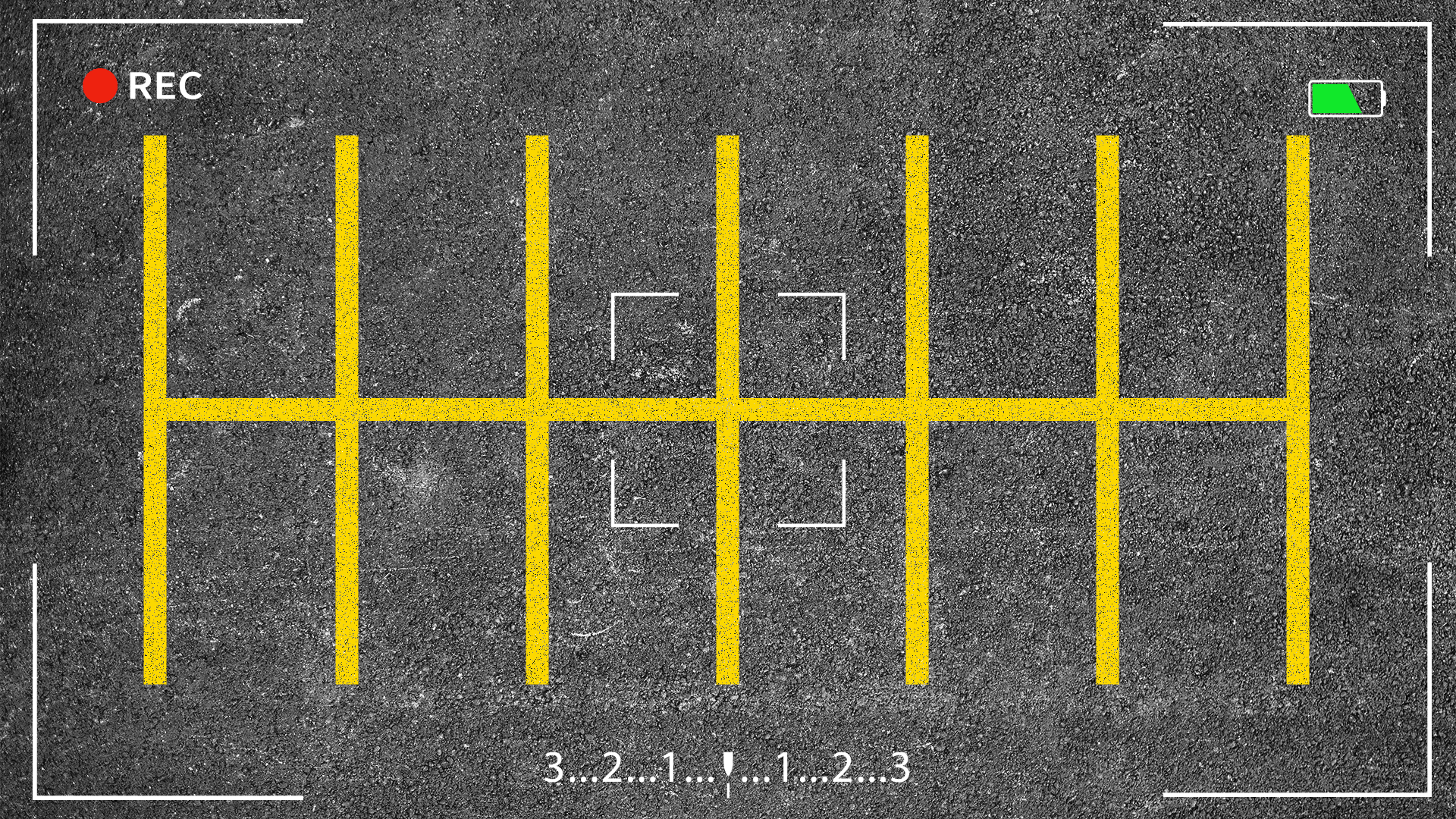 | | | Illustration: Aïda Amer/Axios | | | | Here's a thought that occurred to a few people while weaving their cars through double-parked Amazon trucks and Ubers: Let's find a way to monetize those scofflaws! Why it matters: Video cameras mounted on city streets — and connected to the right software and technology — could one day be a gold standard for urban traffic management. - The nascent technology — now being marketed by a handful of new companies — could be used to bill vehicles that park in commercial spaces, fine vehicles that double-park, and help cities place commercial parking spaces in the best locations.
Where it stands: Several vendors have popped up in the emerging field of digital curb management. - Coord says it "supports over 4.9 million curb spaces in 15 cities across North America."
- Automotus says its installations have helped reduce traffic caused by parking by 20%.
- curbFlow says it "identifies vacancy at the curb in real time for drivers needing to pick up & drop off deliveries."
- Other companies, like Flow Labs and Flux Mobility, are at earlier stages of development.
What they're saying: Jordan Justus, co-founder and CEO of Automotus, walked me through the company's plans. - For cities that hire Automotus: "We've developed a system to automatically invoice companies for their time at the curb — whether it's DoorDash or PostMates, Amazon or UPS — so that not only are these folks paying [cities based on their time in a commercial parking spot], but they're paying based on their use."
- For Uber, Lyft drivers (and others): An app will help find parking for motorists, free-of-charge.
- For urban revenue coffers: Automotus automates enforcement of double-parking. "Enforcement mechanisms today rely on officers driving or biking around to get back to the same spot every two hours, when you have a vehicle stopping for anywhere from 2 to 15 minutes."
Details: Automotus has done projects in cities like Bellingham, Washington, and campuses like Loyola Marymount University in Los Angeles. - But Coord "now supports over 4.9 million curb spaces in 15 cities across North America," including, most recently, Omaha.
- Boston, Chicago, Atlanta, Denver are also using Coord's platform.
|     | | | | | | A message from DEMETER FRAGRANCE LIBRARY® | | Demeter brings affordable luxury to your hand sanitizer | | | 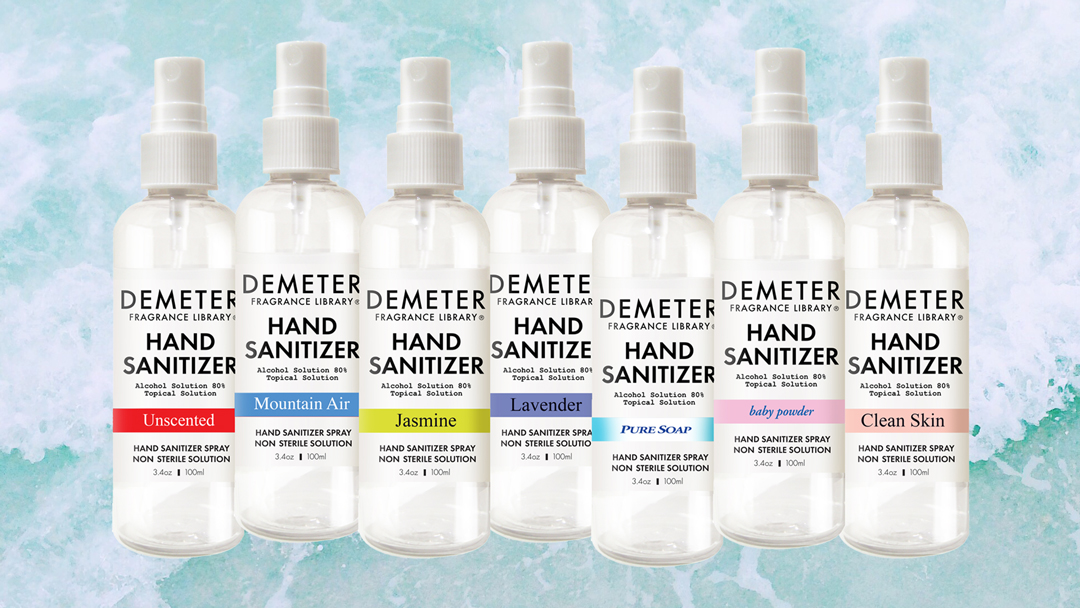 | | | | Demeter has launched a new line of hand sanitizers, providing you with a luxurious way to clean your hands while smelling great. Here's how: with a gentle mix of 80% ethyl alcohol and top shelf fragrance oils – all packaged in an unbreakable bottle. Learn about their library of 300+ fragrances. | | | | | | 3. Americans are moving again | 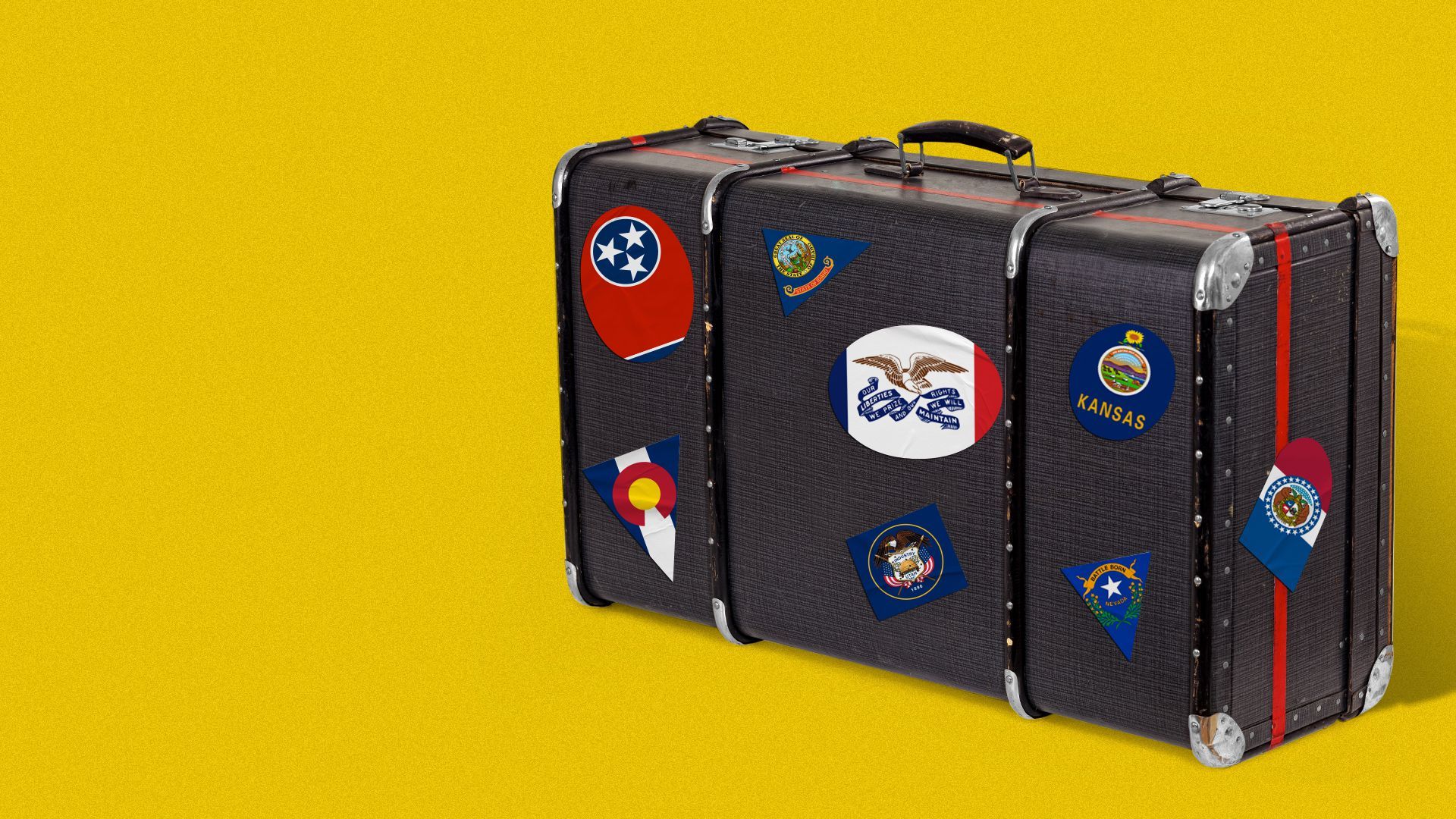 | | | Illustration: Aïda Amer/Axios | | | | For decades, the share of Americans moving to new cities has been falling. The pandemic-induced rise of telework is turning that trend around, as my colleague Erica Pandey writes in her @Work newsletter. (Sign up here.) Why it matters: This dispersion of people from big metros to smaller ones and from the coasts to the middle of the country could be a boon for dozens of left-behind cities across the U.S. The two biggest exoduses are out of New York City and San Francisco, per data from moving companies cited by Bloomberg's CityLab. - United Van Lines saw moves out of New York and San Francisco jump 45% and 23%, respectively, during the summer months.
- While many of the people moving out of these cities are going to other superstar metros, others are relocating to smaller, up-and-coming cities, like Tampa Bay, Raleigh, Houston and Denver.
Go deeper |     | | | | | | 4. Worthy of your time |  | | | Illustration: Rebecca Zisser/Axios | | | | Ballot billions: Behind the efforts to fund and finance climate action (Smart Cities Dive) - A look at measures on local ballots next week, including ones in Denver and Berkeley, California, that aim to raise money for green initiatives.
The commoditization of temporary housing (Science Direct) - The shortage of affordable housing has made "temporary housing" more attractive to developers and led to the emergence of for-profit purveyors.
A "Great Society" for America's cities (The Hill) - A stroll back to the visionary gleam of LBJ's 1964 "Great Society" speech, which sought an America "free from poverty and racial injustice."
|     | | | | | | 5. 1 candy thing | 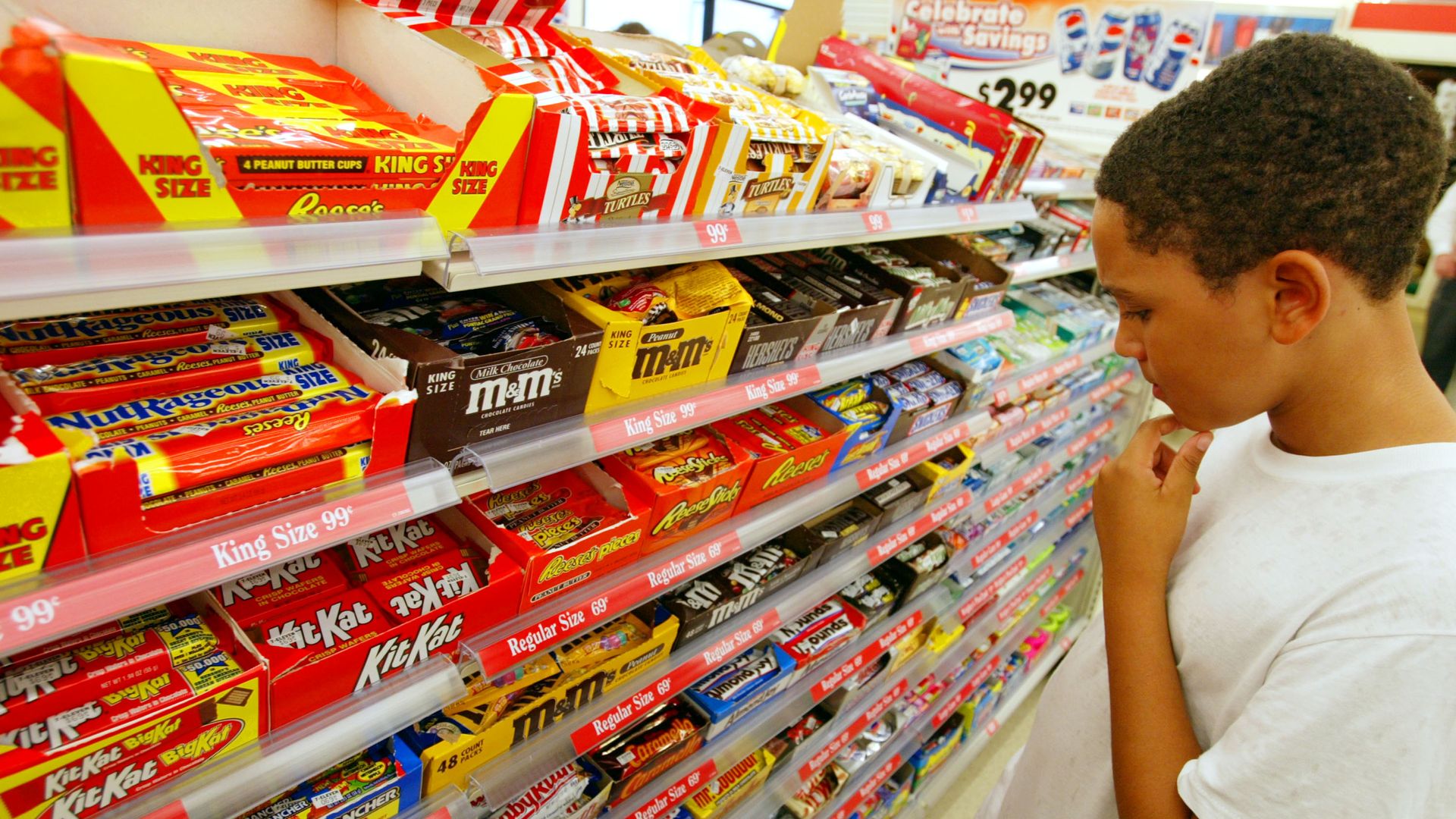 | | | This boy doesn't seem to checking out the Skittles. Photo by Joe Raedle/Getty Images | | | | I trolled the breadth of the internet to find a gleaming chart of the "favorite candies by U.S. city," and I did — but it comes with a bunch of asterisks (which is why I used that cute photo, above, instead.) Bear with me here. The intrigue: There are two maps of U.S. states by Halloween candy out there (that I could find). One is from CandyStore.com, and based on 13 years of bulk candy sales, focused on the months before Halloween. - The "favorite candies" skew toward wrapped, less-expensive options aimed at trick-or-treaters.
- Do we really believe that Californians crave Skittles? That Arizonans would take Hot Tamales over M&M's? And come on, Montana — Dubble Bubble?
The more realistic map comes from a site I'd never heard of, bid-on-equipment.com, which sells used machinery (like candy-makers) and says its results are based on Google search volumes. - While the map is chocolate-centric, it also has a lot of booby prizes. (Nerds? RedHots? AirHeads?)
- Two states — Ohio and Pennsylvania — are listed as preferring Mars Bars, which were discontinued in the U.S. in 2011.
Its city-by-city breakdown of favorite Halloween candies: - M&Ms: New York City, Columbus, Fort Worth, San Antonio and San Diego.
- Reese's: Austin, Jacksonville, Phoenix and Washington, D.C.
- KitKats in Chicago; Milky Ways in San Francisco and Seattle.
- Jolly Ranchers in L.A., and Milk Duds in Charlotte, Houston and Philadelphia.
|     | | | | | | A message from DEMETER FRAGRANCE LIBRARY® | | Demeter brings affordable luxury to your hand sanitizer | | |  | | | | Demeter has launched a new line of hand sanitizers, providing you with a luxurious way to clean your hands while smelling great. Here's how: with a gentle mix of 80% ethyl alcohol and top shelf fragrance oils – all packaged in an unbreakable bottle. Learn about their library of 300+ fragrances. | | | | Thanks for reading Axios Cities. Please send praise, gripes, thoughts, story ideas and virtual candy to jennifer@axios.com or @jenniferkingson on Twitter. And if you like the newsletter, please tell your friends and colleagues to sign up here —it's free! See you next Thursday. | | | | Axios thanks our partners for supporting our newsletters.
Sponsorship has no influence on editorial content. Axios, 3100 Clarendon Blvd, Suite 1300, Arlington VA 22201 | | | You received this email because you signed up for newsletters from Axios.
Change your preferences or unsubscribe here. | | | Was this email forwarded to you?
Sign up now to get Axios in your inbox. | | | | Follow Axios on social media:    | | | | | |









No comments:
Post a Comment